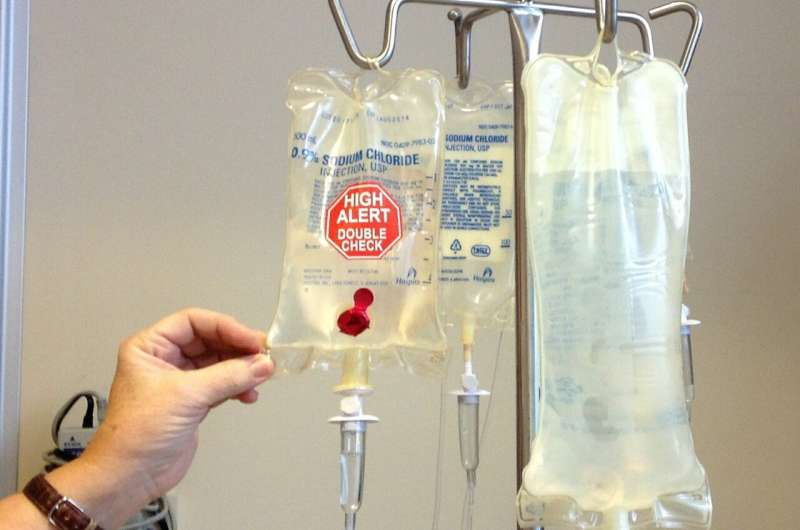
A new study from the University of Bath School of Management, TED University in Turkey and Wayne State University in the United States has identified how to radically improve the delivery of chemotherapy treatment to cancer patients while reducing the burden on nursing staff with a new scheduling model.
Dr. Melih Celik, senior lecturer at the School of Management in Bath, said the new mathematical model reduced patient waiting times by 80% at a chemotherapy day unit of a university hospital in Turkey, and cut nursing overtime by more than 30%. Importantly for hard-pressed front-line medical staff, the model delivers useful results in minutes, compared to the hours taken by more complex tools.
“Cancer Research UK statistics show around 1,000 people are diagnosed with cancer in the UK every day. The number of global cancer patients is expected to increase to more than 23 million by 2030 from 17 million currently, underlining the need for the more efficient delivery of chemotherapy treatment and to improve the patient’s experience in a clinic,” Celik said.
Celik and his colleagues studied the chemotherapy delivery process. Typically a patient needs to go through a number of steps, including blood tests, X-rays and oncological evaluations. The patient then waits for a nurse and a chemotherapy chair to receive the treatment after further blood pressure and fever checks. Pre-medication drugs are administered to avert potential side effects from the chemotherapy, which then commences.
“Chemotherapy day units operate with extremely limited resources and under tight schedules so the design of the schedule is crucial for the most efficient use of resources. Day units take a two-step approach: first, patients are assigned appointment days based on their initial assessment or required infusion frequency. Then, specific appointment times are determined based on the estimated time it will take for the chemotherapy drugs to be fully infused (that is, delivered into each patient’s bloodstream),” he said.
The research team conducted a time study of the actual infusion times for more than 200 cancer patients to see how they compared with the times that medical staff estimated would be needed when they set their appointment schedules.
“The actual results showed significant deviations from the estimates. For example, of the 39 patients with an estimated infusion time of 150 minutes, actual times ranged between 61 and 196 minutes. We also observed that shorter infusion durations were underestimated, whereas longer ones were overestimated,” he said.
Celik said he and his fellow researchers—Dr. Serhat Gul of TED University, and Nur Banu Demir from Wayne State University, were conscious of the need to create a scheduling model that could be used in situations where time was of the essence, ruling out the use of complex mathematical models that could identify the ‘best’ set of decisions but which would take too long to be of practical use in a hard-pressed medical environment.
“To overcome this, we built a simpler approach which provides ‘near-best’ schedules in only a few minutes and which also outperforms the existing schedules of the chemotherapy unit by a long margin; patient waiting times were improved by 80%, nurse overtime was reduced by more than 30%, and chair utilization was increased by 5%,” he said.
Celik said the model could improve the experience of both medical provider and patient. The former wanted to balance nurse workloads and avoid overtime were possible, and to ensure that chemotherapy chairs were used as efficiently as possible. The latter chiefly wanted reduced waiting times at the clinic.
Celik said the chemotherapy unit in the study used a ‘functional care delivery’ approach, which assumed any nurse could help treat any cancer patient. However, he said other hospitals took a more personalized approach, with each chemotherapy nurse treating only a specific set of patients, and that he and his colleagues were developing a scheduling model for that scenario.
“We are extending this work to look at primary care delivery, where each chemotherapy nurse has a specific group of patients that only they treat. The benefit of this is that nurses know the specifics of the patients better—but limiting the set of patients for each nurse also makes the system less flexible. Our aim is to compare and quantify this trade-off between the two delivery systems,” he said.
Source: Read Full Article